Aquarium enthusiasts often overlook the charm and utility of freshwater aquarium shrimp. These tiny critters add a unique aesthetic to your tank and contribute significantly to its maintenance. Shrimp are low-maintenance; many species help keep your aquarium clean by feeding on algae.
With a myriad of shapes, colors, and sizes, freshwater shrimp are a delightful addition to any aquarium. Let’s dive into the captivating world of these aquatic invertebrates and explore some of the best shrimp species for your freshwater aquarium.
1. Cherry Shrimp: The Algae Eating Champions
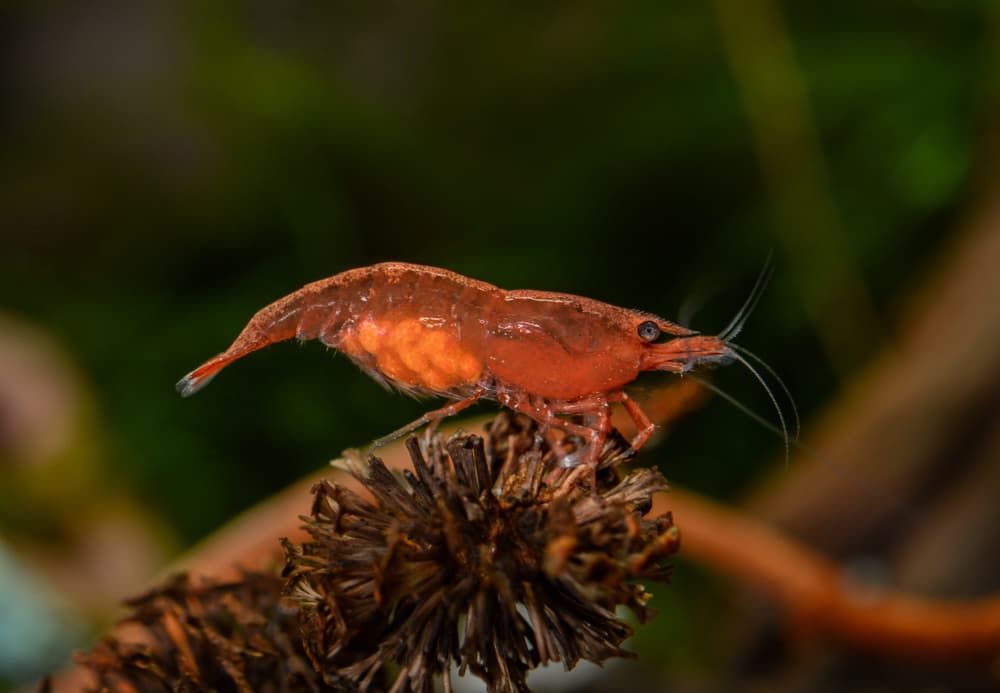
Cherry Shrimp, native to Taiwan, are one of the best algae eaters that can help keep your aquarium in good shape. They are easy to breed in captivity and are known for their bright red coloration. Interestingly, there are different color grades available, with the highest grade (and priciest) being completely red. Cherry Shrimp are perfect for beginners due to their hardy nature and easy care requirements.
Difficulty Level: Beginner
2. Ghost Shrimp: The Transparent Scavengers
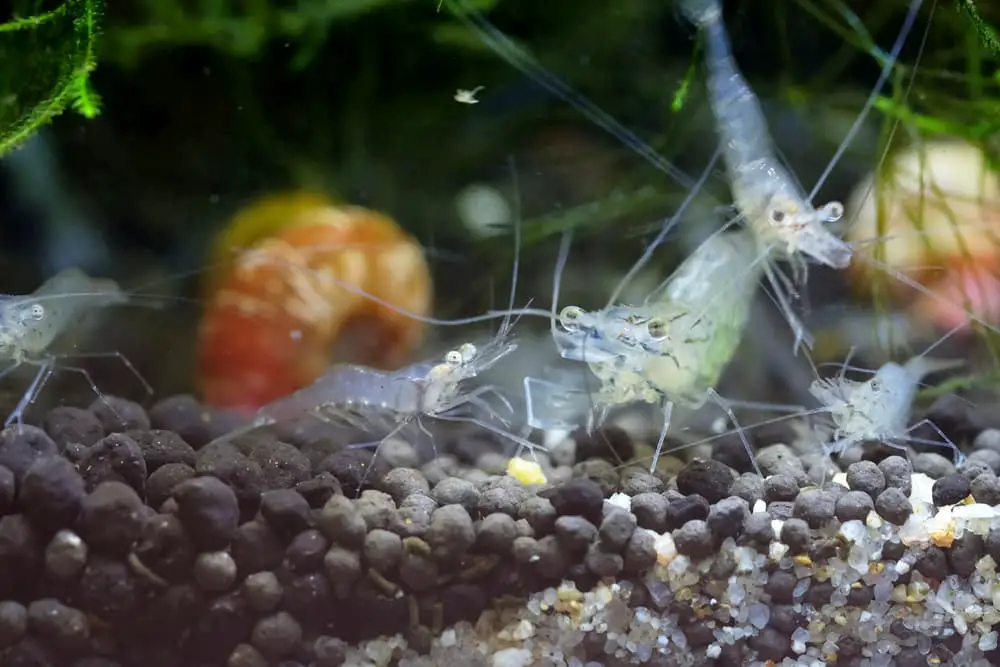
Ghost Shrimp, also known as Glass Shrimp, are fascinating creatures with transparent bodies, making them a unique addition to your aquarium. These active scavengers spend their day foraging for food, primarily algae, and can significantly contribute to the cleanliness of your tank when kept in larger groups. They thrive best in a natural environment filled with plants, rocks, and driftwood, which provide both food and shelter.
Difficulty Level: Beginner
3. Amano Shrimp: The Algae Eating Masters
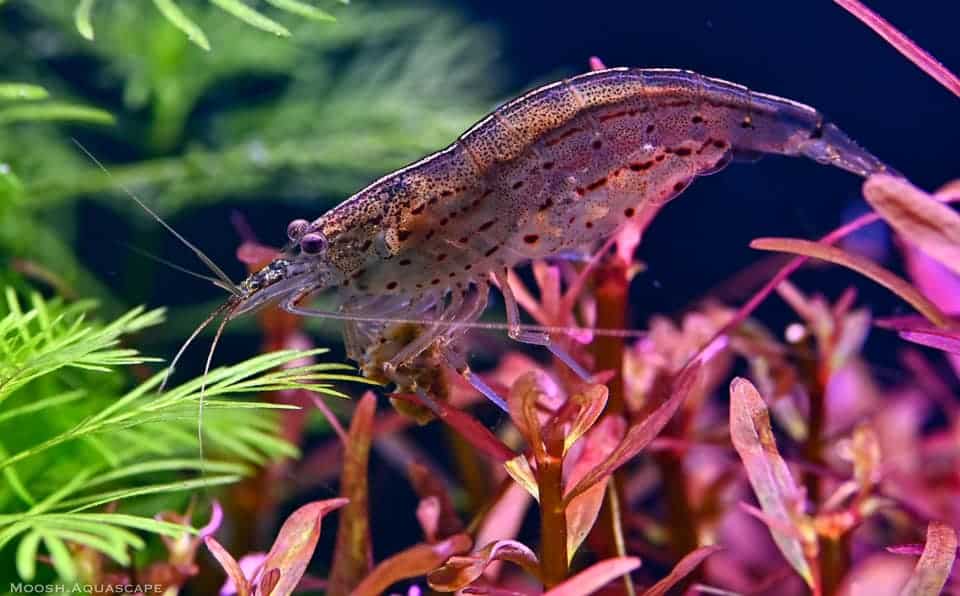
Amano Shrimp are a popular choice in the aquarium hobby due to their ability to consume large quantities of algae without making the water murky. They are usually gray and transparent, and depending on the lighting, they may take on a greenish tint. Dark-colored spots run along the length of their body, making them masters of camouflage in a heavily planted tank.
Difficulty Level: Beginner
4. Bamboo Shrimp: The Filter Feeders
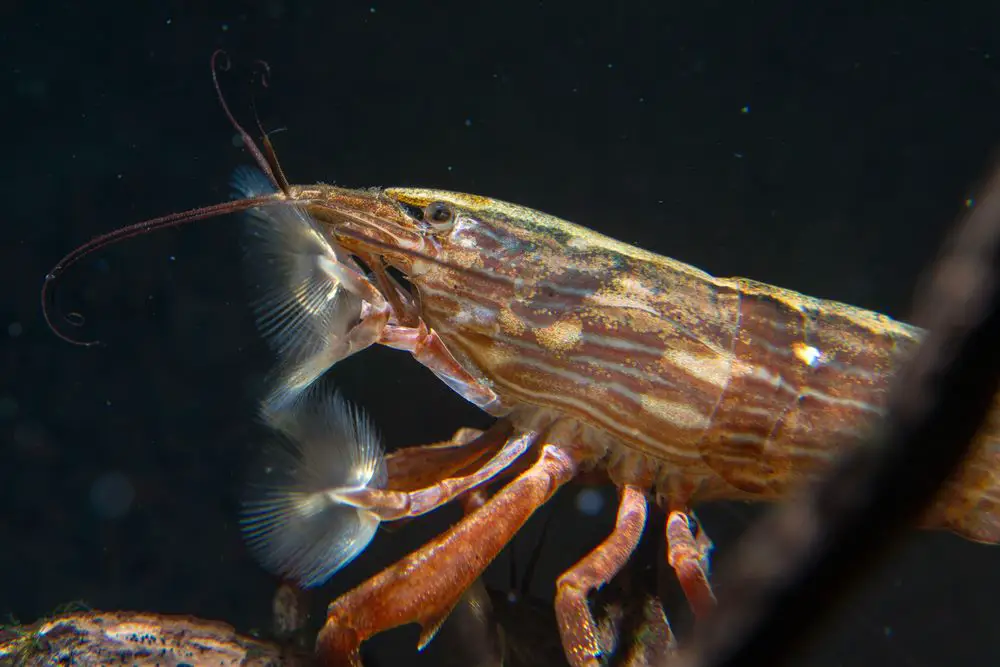
Bamboo Shrimp, native to Southeast Asia, are popular for their natural filter-feeding habits. They extract microalgae and tiny organisms from the water, making them a beautiful and beneficial addition to your tank. However, don’t expect them to actively eat algae like some other shrimp species. They are quite active and will continually move to new spots as they feed. One interesting fact about Bamboo Shrimp is their molting cycle, which occurs every 45 to 65 days!
Difficulty Level: Beginner
5. Red Rili Shrimp: The Colorful Omnivores

Red Rili Shrimp, a product of selective breeding from the ever-popular Red Cherry Shrimp, are easy to care for and tolerate a wide range of water conditions. They are known for their bright red coloration, with patches of red covering the head, tail, and legs. Unlike Red Cherry Shrimp, Red Rilis are transparent instead of white. They are omnivores and will eat any food that they can find in the tank.
Difficulty Level: Beginner
6. Snowball Shrimp: The Breeders’ Choice

Snowball Shrimp, also known as the White Pearl Shrimp, are a great option if you want to get into breeding. This species breeds very quickly and in large numbers. From spawning, it only takes as little as 30 days for the eggs to hatch. The shrimp gets its name from the bright white eggs, which look like tiny snowballs! The color of the eggs is great for breeders, as it makes spotting them a cinch. Snowball Shrimp have a milky look. While you can still see their internal organs, you won’t be able to see finer details like you would with other see-through species.
Difficulty Level: Beginner
7. Orange Eyed Blue Tiger Shrimp: The Striped Scavengers
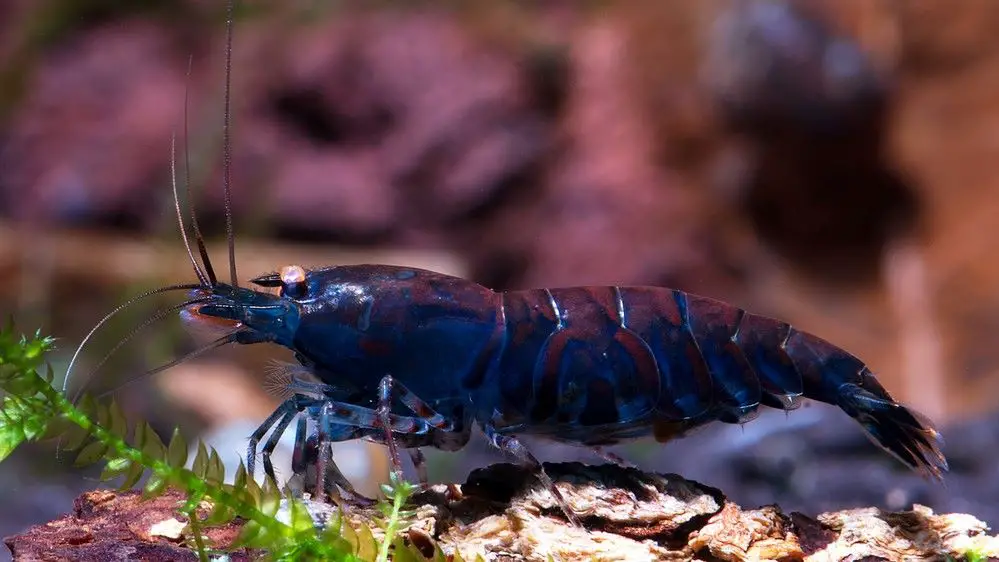
Orange Eyed Blue Tiger Shrimp are aptly named for their coloration. The base color is dark blue, accompanied by black vertical stripes that resemble that of a tiger’s. You may also find some subtle purple shading on the top of their shell. On their head, the shrimp have bright orange eyes and long feelers for scavenging. Blue Tiger Shrimp aren’t the easiest to care for. They are inbred very often, resulting in sensitive specimens that don’t tolerate poor water conditions.
Difficulty Level: Beginner-Intermediate
8. Crystal Red Shrimp: The Striped Omnivores

Crystal Red Shrimp, a product of selective breeding from the Bee Shrimp, are small freshwater shrimp known for their vibrant red and crisp white patches. Usually, the colors take the form of stripes. However, the color markings vary dramatically from specimen to specimen. These invertebrates are very passive and will spend most of their time searching the tank for food. They’re omnivores, so they will eat anything that they can get their feelers on.
Difficulty Level: Beginner-Intermediate
9. Panda Shrimp: The Black and White Beauties
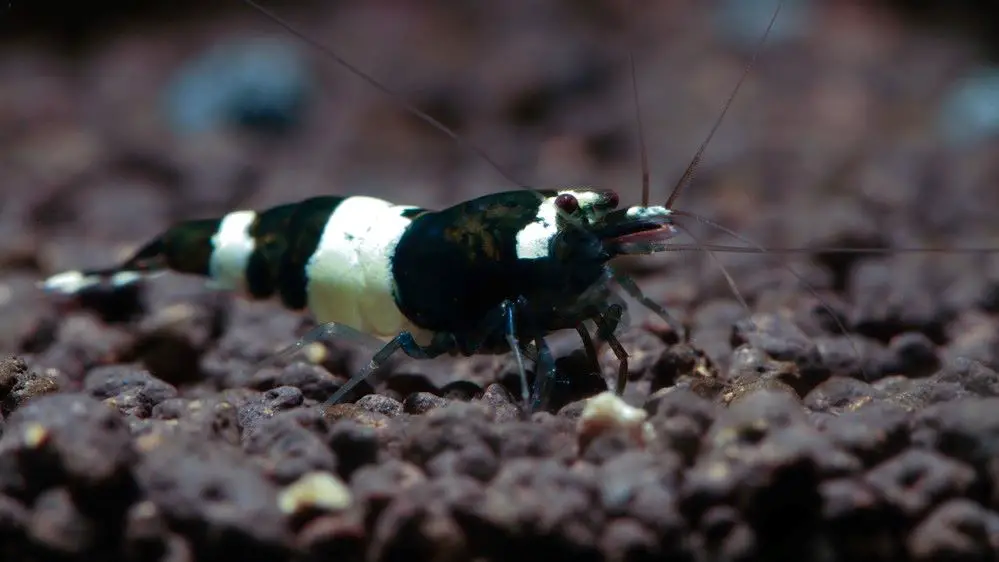
Panda Shrimp, covered in thick bands of alternating black and white, are quite stunning and stand out well in a natural tank setup. These aquarium shrimp need plenty of places to hide, which means filling the tank with plants, caves, and other decorations that the shrimp can use for shelter. Panda Shrimp can be a bit difficult to take care of. Not only do they require stable water conditions, but these invertebrates are fragile. They’re virtually defenseless, and their color pattern often attracts hungry fish.
Difficulty Level: Intermediate
10. Blue Bolt Shrimp:
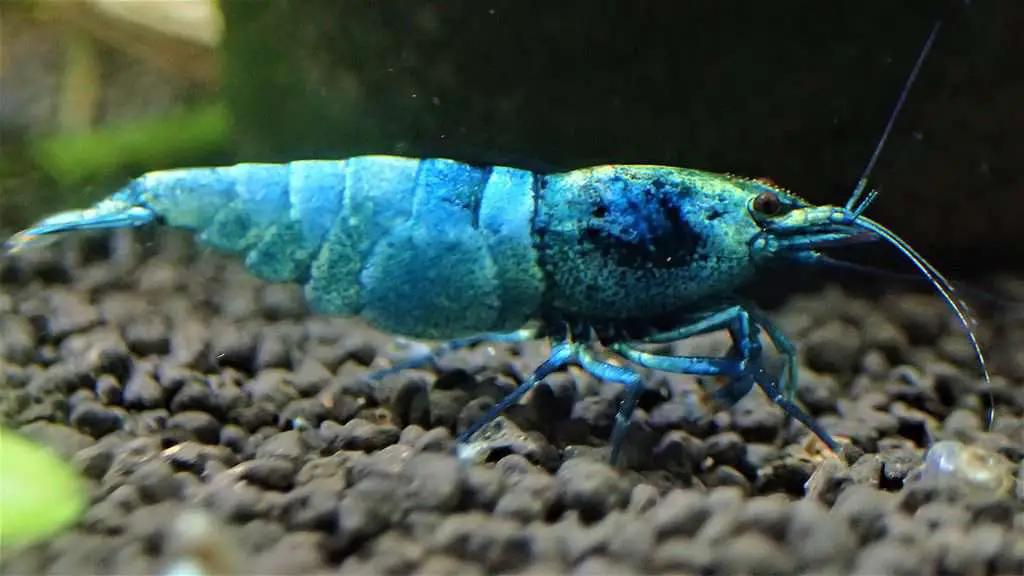
Blue Bolt Shrimp are eye-catching creatures with colors of white and blue. The tail is usually covered in white, while the head has patches of different shades of blue. The blue color and white color meet in the middle of the shrimp’s body to create a beautiful gradient. Like most shrimp types, Blue Bolts have a few basics you need to cover. These include multiple hiding spots, dense vegetation, and some algae!
Difficulty Level: Intermediate
11. Vampire Shrimp: The Color-Changing Filter Feeders

Vampire Shrimp, found in Western Africa and South America, are a rare species with a lot to offer! They have longer lifespans than most shrimp, living up to five years in captivity. The appearance of the shrimp is its most exciting feature. Coloration can vary quite a bit. You might see shrimp that are blue, gray, brown, or even pink. The shrimpoften changes colors multiple times throughout the year, adding some unique variety to your tank.
Difficulty Level: Beginner-Intermediate
12. Pinto Shrimp

Pinto Shrimp, covered in shades of dark black and pure white, are a standout species. They’re not great for those who don’t have a ton of experience caring for shrimp, though. Pinto Shrimp can be sensitive to changes in water quality. They need stable conditions to truly thrive. The shrimp do best in tanks with plenty of hiding spots and a good amount of vegetation.
Difficulty Level: Intermediate
13. Cardinal Sulawesi Shrimp: The Exotic Beauties

Cardinal Sulawesi Shrimp, as their name suggests, come from the Sulawesi region of Indonesia. They are known for their vibrant colors and unique patterns. These shrimp are not for the faint-hearted as they require specific water conditions and a well-established tank to thrive. They are best suited for experienced aquarists who can cater to their needs.
Difficulty Level: Advanced
14. Babaulti Shrimp: The Colorful Swimmers
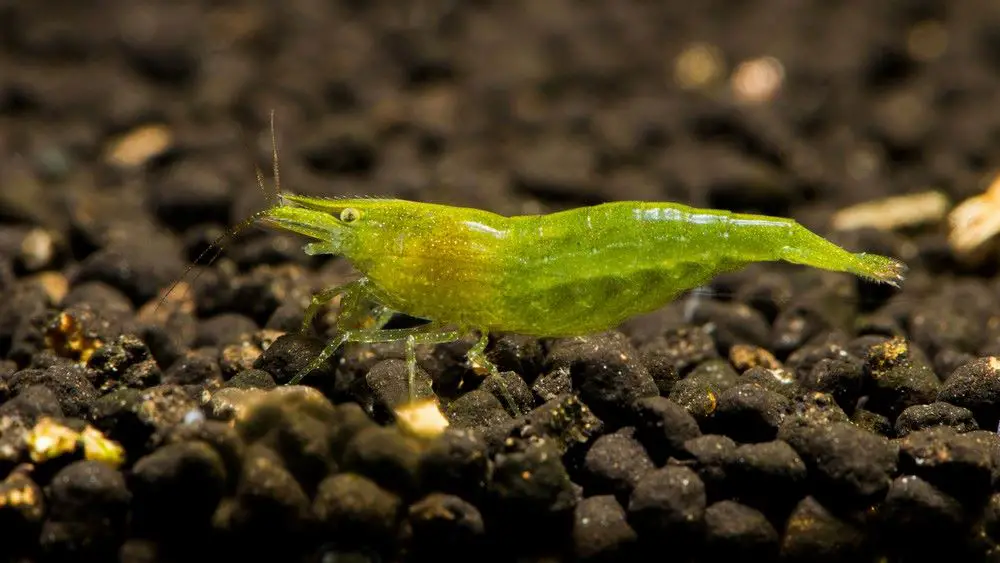
Babaulti Shrimp are a unique and beautiful species that are known for their wide range of colors, including green, brown, yellow, and even striped. They are a bit more challenging to keep due to their specific water parameter requirements. They thrive in a well-established tank with plenty of hiding spots and a good amount of vegetation. They are best suited for experienced aquarists who can cater to their needs.
Difficulty Level: Intermediate
15. Tangerine Tiger Shrimp: The Vibrant Scavengers

Tangerine Tiger Shrimp are a vibrant and active species that are known for their bright orange coloration with black stripes. They are scavengers by nature and will spend their time foraging for food. These shrimp are relatively easy to keep and are a great choice for beginners and experienced aquarists alike.
Difficulty Level: Beginner
16. Blue Dream Shrimp: The Dreamy Dwellers
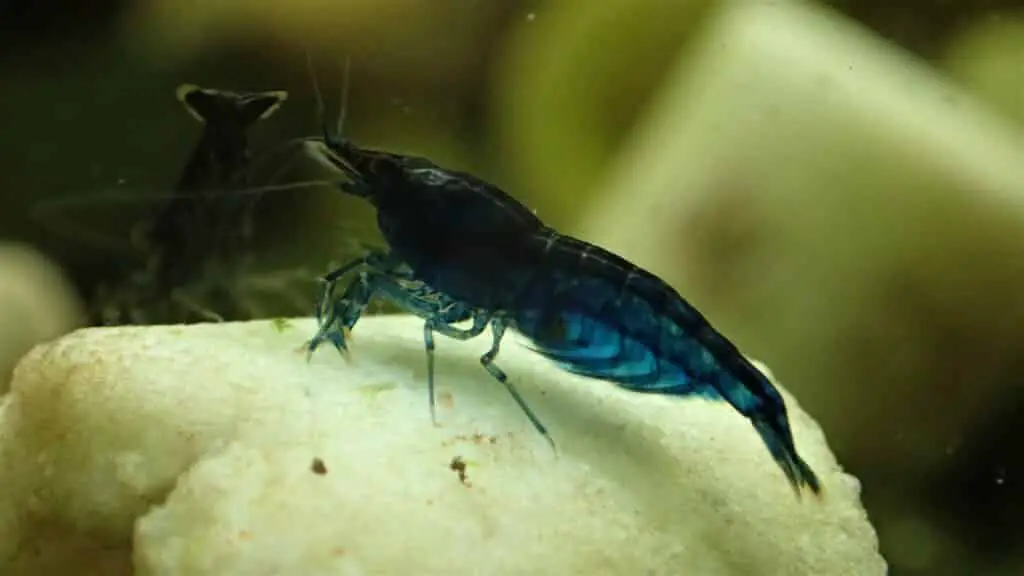
Blue Dream Shrimp are a beautiful and peaceful species that are known for their striking blue coloration. They are relatively easy to keep and are a great choice for beginners and experienced aquarists alike. They thrive in a well-established tank with plenty of hiding spots and a good amount of vegetation.
Difficulty Level: Beginner
17. Red Nose Shrimp: The Unique Filter Feeders

Red Nose Shrimp, also known as Pinocchio Shrimp, are a unique species known for their long rostrum, which resembles a nose. They are filter feeders and require specific water conditions to thrive. They are best suited for experienced aquarists who can cater to their needs.
Difficulty Level: Intermediate
18. Green Jade Shrimp: The Emerald Dwellers

Green Jade Shrimp are a unique and beautiful species that are known for their striking green coloration. They are a bit more challenging to keep due to their specific water parameter requirements. They thrive in a well-established tank with plenty of hiding spots and a good amount of vegetation. They are best suited for experienced aquarists who can cater to their needs.
Difficulty Level: Intermediate
19. Wine Red Shrimp: The Vibrant Scavengers
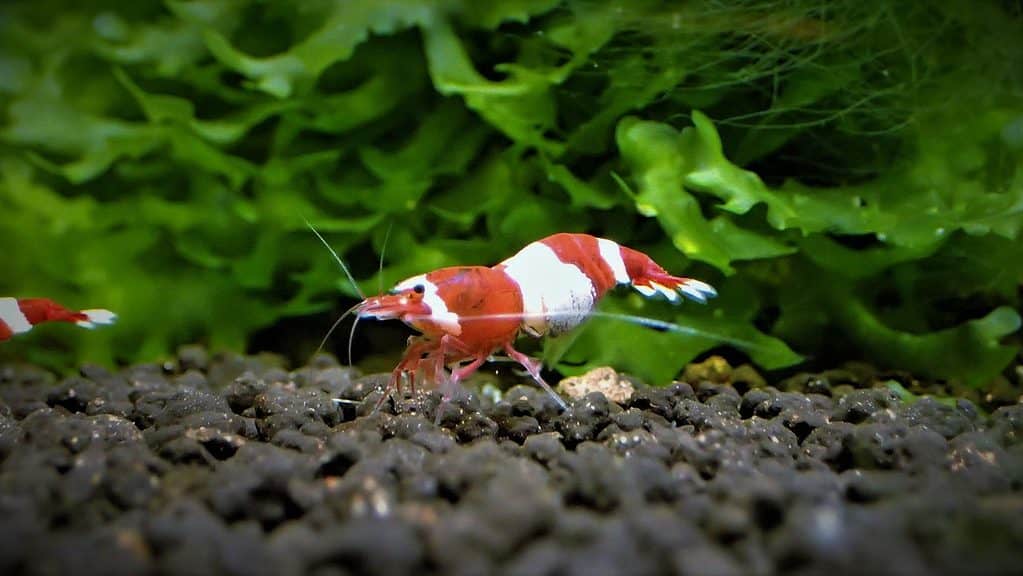
Red Wine Shrimp are a vibrant and active species that are known for their deep red coloration. They are scavengers by nature and will spend their time foraging for food. These shrimp are relatively easy to keep and are a great choice for beginners and experienced aquarists alike.
Difficulty Level: Beginner
20. Red Tiger Shrimp: The Striped Scavengers

Red Tiger Shrimp are a unique and beautiful species that are known for their striking red bodies with black stripes. They are a bit more challenging to keep due to their specific water parameter requirements. They thrive in a well-established tank with plenty of hiding spots and a good amount of vegetation. They are best suited for experienced aquarists who can cater to their needs.
Difficulty Level: Intermediate
21. Red King Kong Shrimp
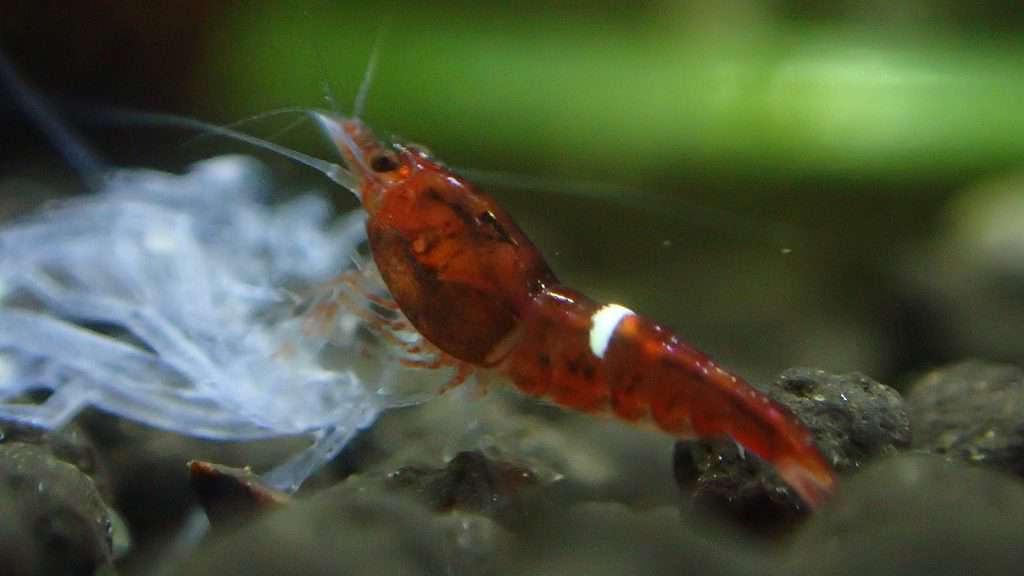
Red King Kong Shrimp are a unique and beautiful species that are known for their striking red coloration. They are a bit more challenging to keep due to their specific water parameter requirements. They thrive in a well-established tank with plenty of hiding spots and a good amount of vegetation. They are best suited for experienced aquarists who can cater to their needs.
Difficulty Level: Intermediate
22. Black King Kong Shrimp
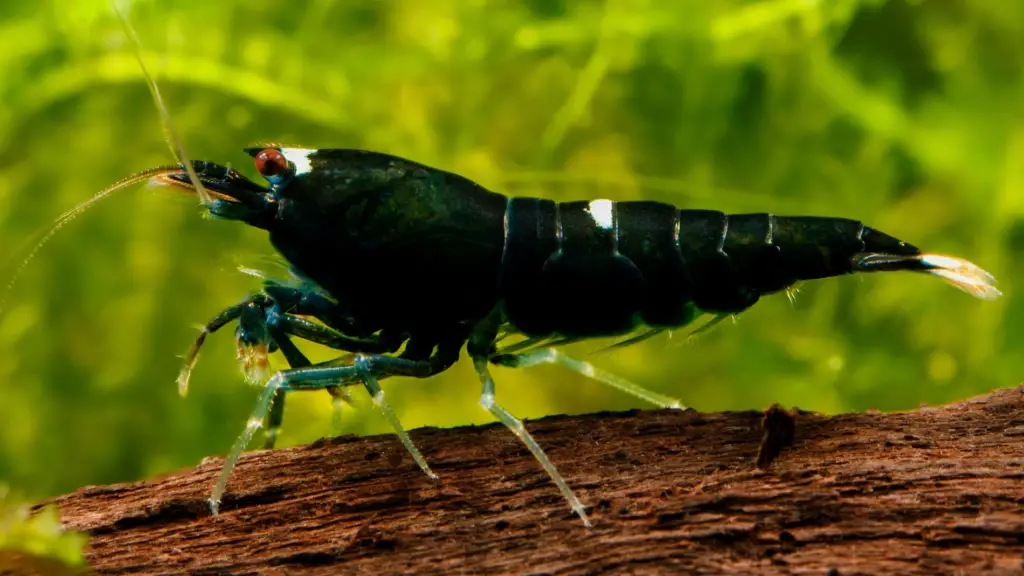
Black King Kong Shrimp are an exotic and visually stunning species recognized for their deep, ebony coloration. They present a more challenging endeavor due to their specific requirements for water parameters. These shrimp flourish in a well-maintained aquarium environment abundant with hiding spots and lush vegetation. They are an ideal choice for seasoned aquarists who are prepared to meet their unique needs.
Difficulty Level: Intermediate
23. Boa Shrimp
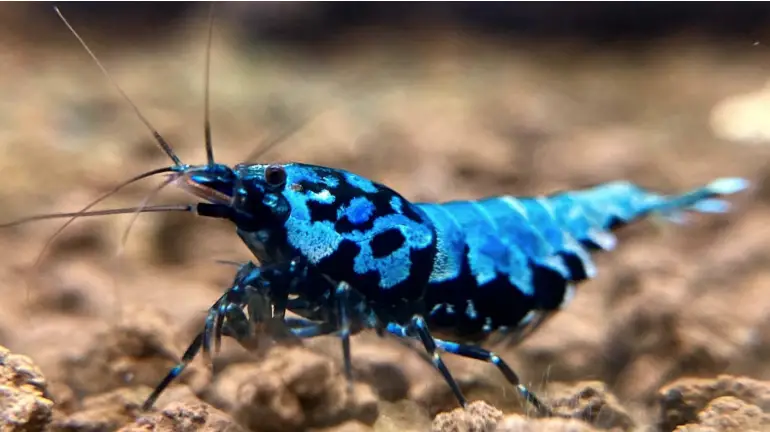
Boa Shrimp are an exotic and captivating species that are known for their unique pattern and coloration. They are characterized by their striking stripes, which resemble the patterns found on a Boa Constrictor, hence the name. These shrimp are a bit more challenging to keep due to their specific water parameter requirements. They thrive in a well-established tank with plenty of hiding spots and a good amount of vegetation. They are best suited for experienced aquarists who can cater to their needs.
Difficulty Level: Intermediate
24. Super Crystal Red Shrimp
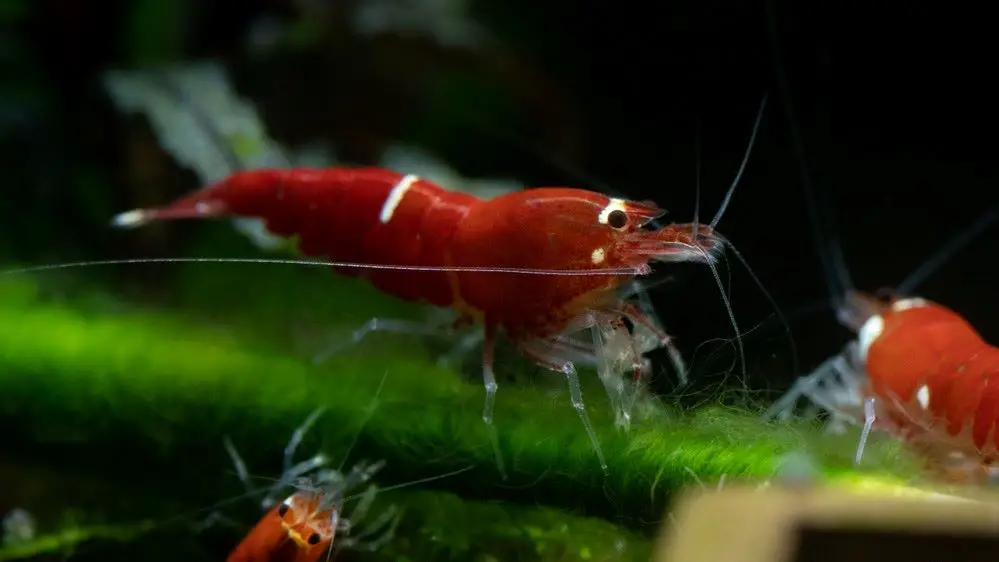
Super Crystal Red Shrimp are a highly sought-after species known for their intense red and white coloration. They are a product of selective breeding from the Crystal Red Shrimp, resulting in a more vibrant and striking color pattern. These shrimp are a bit more challenging to keep due to their specific water parameter requirements. They thrive in a well-established tank with plenty of hiding spots and a good amount of vegetation. They are best suited for experienced aquarists who can cater to their needs.
Difficulty Level: Intermediate
25. Calceo Shrimp: The Vibrant Scavengers
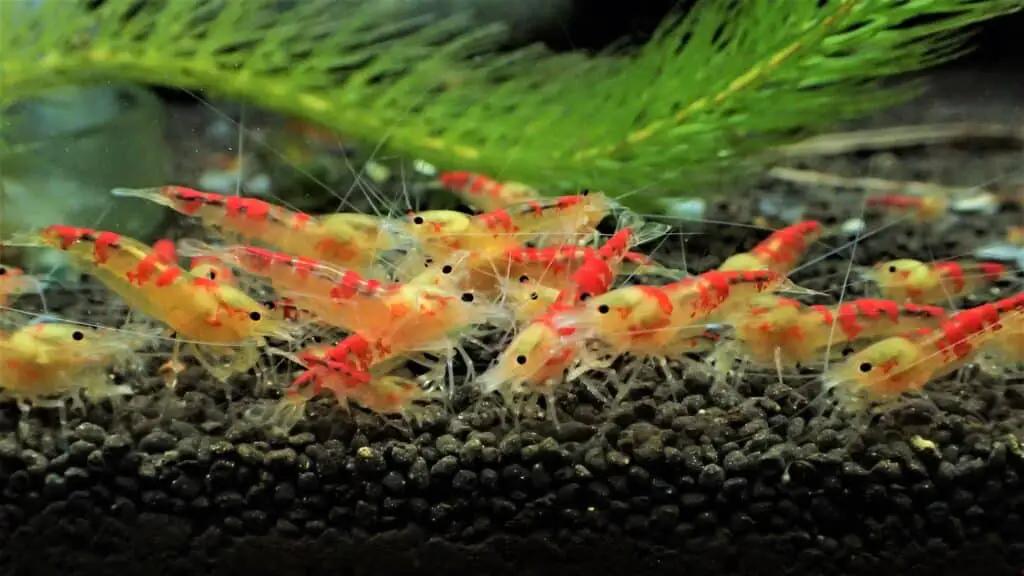
Calceo Shrimp, also known as Golden Dragon, are a vibrant and active species that are known for their bright coloration and unique patterns. They are scavengers by nature and will spend their time foraging for food. These shrimp are relatively easy to keep and are a great choice for beginners and experienced aquarists alike. They thrive in a well-established tank with plenty of hiding spots and a good amount of vegetation.
Difficulty Level: Intermediate
26. Fancy Tiger Shrimp: The Striking Beauties
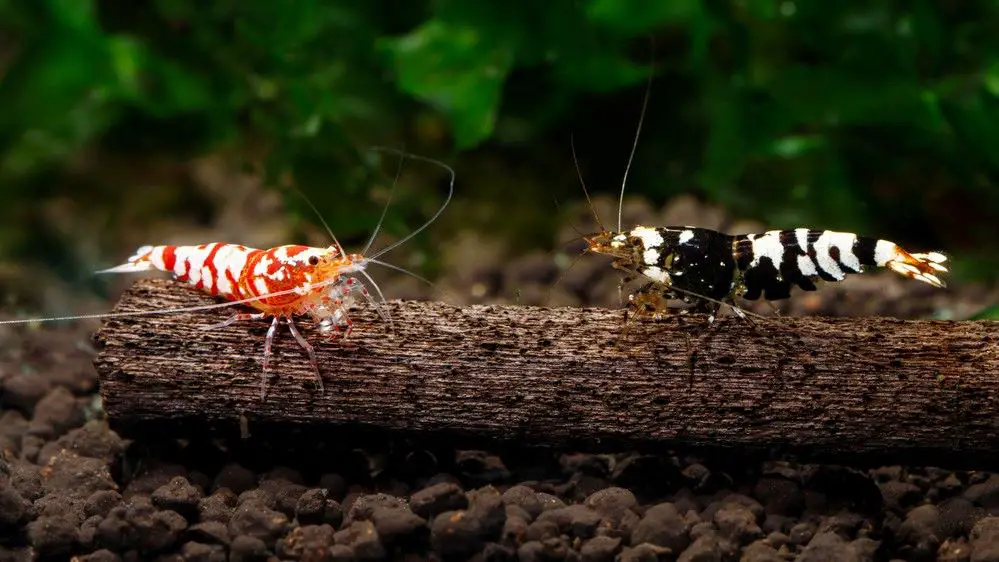
Fancy Tiger Shrimp are a unique and visually appealing species that are known for their striking coloration. Their bodies are adorned with intricate patterns resembling a tiger’s stripes, hence their name. These shrimp are a bit more challenging to keep due to their specific water parameter requirements. They thrive in a well-established tank with plenty of hiding spots and a good amount of vegetation. They are best suited for experienced aquarists who can cater to their needs.
Difficulty Level: Intermediate
27. Fishbone Shrimp
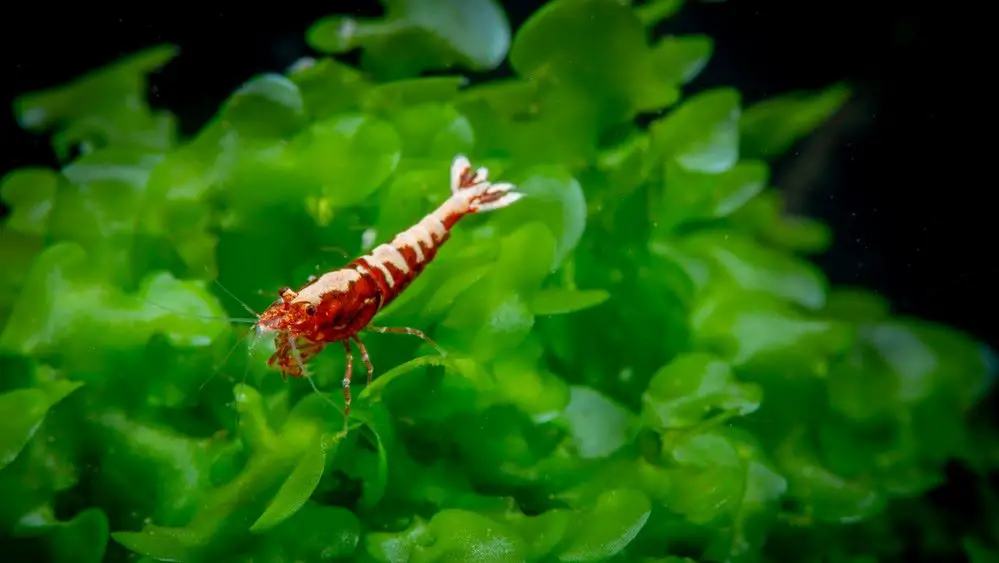
This is a Red Fishbone Pinto Shrimp, They are a unique and visually striking variant of the Pinto Shrimp, known for the distinct ‘fishbone’ pattern that adorns their back. This pattern, reminiscent of a fish’s skeletal structure, gives this shrimp its unique name. The Fishbone in the picture is a classic example of this species. However, if it had spots on its face, it would be classified as a Galaxy Fishbone Shrimp, a further variation of this fascinating species. These shrimp are a bit more challenging to keep due to their specific water parameter requirements. They thrive in a well-established tank with plenty of hiding spots and a good amount of vegetation. They are best suited for experienced aquarists who can cater to their needs.
Difficulty Level: Intermediate
Conclusion
Freshwater shrimp are a fantastic addition to any aquarium. They add color, variety, and utility, making your aquarium a more vibrant and healthier environment. Whether you’re a beginner or an experienced aquarist, there’s a shrimp species that’s perfect for you.
If you need any help, please do not hesitate to contact me.
Happy shrimp keeping!
Frequently Asked Questions
Q. What is the lifespan of freshwater aquarium shrimp?
A. The lifespan of freshwater aquarium shrimp varies depending on the species and the conditions of the tank. On average, most species live between 1 to 3 years. However, some species like the Vampire Shrimp can live up to 5 years in captivity.
Q. What do freshwater aquarium shrimp eat?
A. Freshwater aquarium shrimp are generally omnivorous and will eat a variety of foods. They are excellent scavengers and will consume algae, detritus, and leftover food in the tank. Some shrimp keepers also supplement their diet with specialized shrimp pellets, blanched vegetables, and other commercial shrimp foods.
Q. Can freshwater aquarium shrimp live with fish?
A. Yes, many freshwater aquarium shrimp can coexist peacefully with fish. However, it’s important to choose fish that are non-aggressive and won’t see the shrimp as food. Small, peaceful community fish are usually a good choice. Always research the compatibility of your specific shrimp and fish species before introducing them into the same tank.
Q. How many shrimp can I keep in my aquarium?
A. The number of shrimp you can keep in your aquarium depends on the size of your tank and the species of shrimp. As a general rule, you can keep 2-10 shrimp per gallon of water, depending on the size of the shrimp. However, it’s always better to err on the side of caution and avoid overstocking your tank.
Q. Do freshwater aquarium shrimp breed in captivity?
A. Yes, many species of freshwater aquarium shrimp breed quite readily in captivity, especially if the conditions in the tank are right. Some species like the Cherry Shrimp and Snowball Shrimp are known for their prolific breeding.
Q. Do I need a special setup for my shrimp tank?
A. While shrimp aren’t overly demanding in terms of tank setup, they do appreciate a well-decorated tank with plenty of hiding spots. Live plants, rocks, and driftwood can provide shelter and also help to maintain water quality. Some shrimp species have specific water parameter requirements, so it’s important to research the needs of your particular species.
